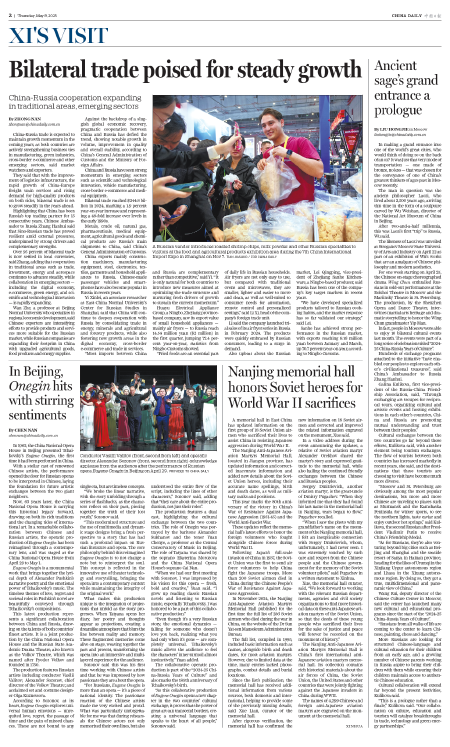A memorial hall in East China has updated information on the first group of 18 Soviet Union airmen who sacrificed their lives to assist China in resisting Japanese aggression during World War II.
The Nanjing Anti-Japanese Aviation Martyrs Memorial Hall, located in Jiangsu province, has updated information and corrected inaccurate information and added new details about the Soviet Union heroes, including their accurate name spellings, birth and death dates, as well as military ranks and positions.
This year marks the 80th anniversary of the victory in China's War of Resistance Against Japanese Aggression (1931-45) and the World Anti-Fascist War.
These updates reflect the memorial hall's latest efforts to honor the foreign volunteers who fought alongside Chinese forces during World War II.
Following Japan's full-scale invasion of China in 1937, the Soviet Union was the first to send air force volunteers to help China fight the Japanese troops. More than 200 Soviet airmen died in China during the Chinese People's War of Resistance Against Japanese Aggression.
In November 2024, the Nanjing Anti-Japanese Aviation Martyrs Memorial Hall published for the first time the full list of 236 Soviet airmen who died during the war in China, on the website of the Dr Sun Yat-sen Mausoleum Administration Bureau.
The full list, compiled in 1995, included basic information such as names, alongside birth and death dates, for most aviation martyrs. However, due to limited data at the time, many entries lacked photographs, combat details and burial locations.
Since the list's publication, the memorial hall has received additional information from various sources, both domestic and international, helping to provide some of the previously missing details, said Xue Lian, curator of the memorial hall.
After rigorous verification, the memorial hall has confirmed the new information on 18 Soviet airmen and corrected and improved the related information engraved on the monument, Xue said.
In a video address during the event announcing the updates, a relative of Soviet aviation martyr Alexander Orekhov shared the martyr's story and expressed gratitude to the memorial hall, while also hailing the continued friendly exchanges between the Chinese and Russian peoples.
Sergey Dmitrievich, another aviation martyr, is the great-uncle of Dmitry Pugachev. "When they informed me that they had found his last name in the memorial hall in Nanjing, tears began to flow," Pugachev recalled.
"When I saw the photo with my grandfather's name on the monument of the Nanjing memorial hall, I felt an inexplicable connection with Sergey Dmitrievich, whom, unfortunately, I had never seen. I was extremely touched by such care and respect from the Chinese people and the Chinese government for the memory of the Soviet volunteer pilots," said Pugachev in a written statement to Xinhua.
Xue, the memorial hall curator, said, "We look forward to working with the relevant Russian departments, agencies and civil society organizations to find more historical data on these anti-Japanese aviation martyrs of the Soviet Union, so that the deeds of these young people who sacrificed their lives for the sake of justice and peace will forever be recorded on the monument of history."
The Nanjing Anti-Japanese Aviation Martyrs Memorial Hall is China's first international anti-Japanese aviation martyrs memorial hall. Its collection contains rich historical materials about the air forces of China, the Soviet Union, the United States and other countries that were jointly fighting against the Japanese invaders in China during WWII.
The names of 4,299 Chinese and foreign anti-Japanese aviation martyrs are engraved on the monument at the memorial hall.

